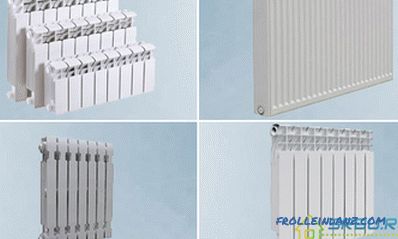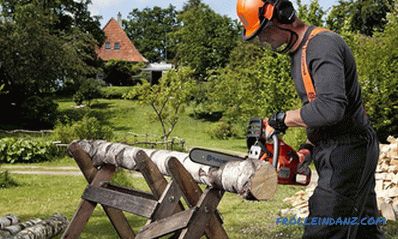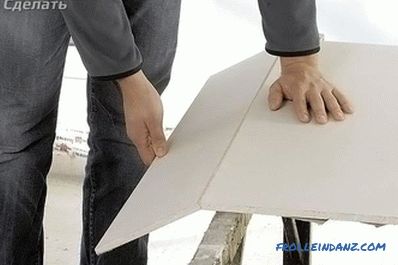In recent years there has been a steady trend: homeowners are replacing old iron pipes with modern ones made of polyethylene. This preference can be explained by an easy assembly process, low weight of structures, low cost, corrosion resistance, smoother inner walls. The last two characteristics make it possible not to lose water quality over time and prolong the service life of the pipeline itself.
Purpose
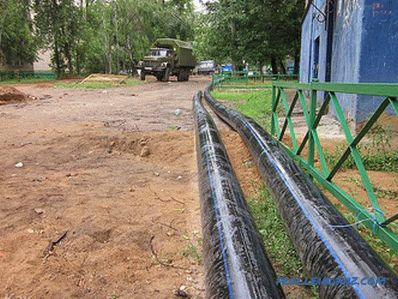 Pipeline
Pipeline
Installing plastic pipes with your own hands any nonprofessional . The main thing is to follow the instructions from the manufacturers. When buying any pipe, look at its appearance: it should be clean and evenly colored, without damaging the material. No mechanical deformations or scratches are allowed.
Polyethylene pipes are used:
- when installing the cold water supply system;
- building sewage systems;
- in the drainage and drainage systems.
Polyethylene pipes cannot be used to supply hot water or in the heating system - they do not tolerate temperatures above + 40 ° C. In addition, it is impossible to assemble and operate such pipes in rooms where the temperature is below + 5 ° C. In the cold, polyethylene loses its plasticity and flexibility, so tightness can be broken.
Installation of polyethylene pipes
There are several ways to connect polyethylene parts into a single unit.
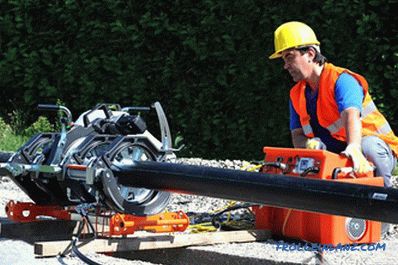 Butt-welding
Butt-welding
Method number 1 . The connection of plastic pipes, working under high pressure, is carried out by butt welding. It is the most reliable method, suitable for difficult places and contact with aggressive media. Only products manufactured by one manufacturer can be welded to each other, since each has its own manufacturing technology. Pipes of different grades are likely to form a weak seam, which over time will lead to rupture or deformation.
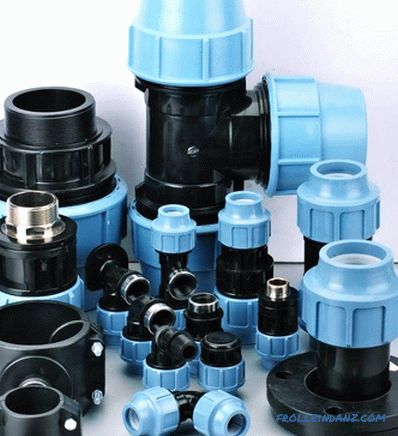 Connection by fittings
Connection by fittings
Method number 2 . Fitting with threaded fittings. For better tightness, Teflon or some other seals are used. If you need to attach a plastic case to a metal one, you should take a transition sleeve or a combined fitting.
 Cold welding
Cold welding
Method number 3. Assembling polyethylene pipes with glue or cold welding. Contrary to popular belief, such a connection may be stronger than the pipeline itself.
To begin, make sure that the pipes to be mounted fit together. The end is obliged to easily go into two thirds of the connecting cuff, and then move with difficulty. The edges must be treated with sandpaper, so that they become rough and wipe with a solvent of methylene chloride for degreasing.
The glue is applied with a swab with a thin layer both on the end of the inserted pipe and in the cuff. Pipes are reduced to the stop and slightly rotated. The whole connection process should take no more than a minute. Drying time - 1 hour, in case of high humidity - 2 hours.
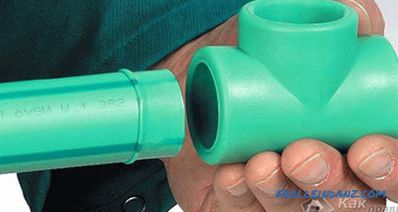 Connection of pipes made of polyethylene
Connection of pipes made of polyethylene
In addition, some rules should be observed during installation:
- Sometimes when assembling a pipeline, you have to bend individual sections. Bending is considered safe when the minimum radius is equal to the eight diameters of the most bent pipe.
- Sometimes pipes are laid inside partitions and concreted. In this case, they will have to be isolated. If the pipes are located outside them and the wall, a distance of at least 2 cm must be left. This will prevent condensation from causing the development of mold or fungus in the gaps.
- It is impossible to prevent the pipeline from sagging, this violates its operation and may lead to depressurization. Properly spaced supports will avoid problems.
Features of installation of pipes from cross-linked polyethylene
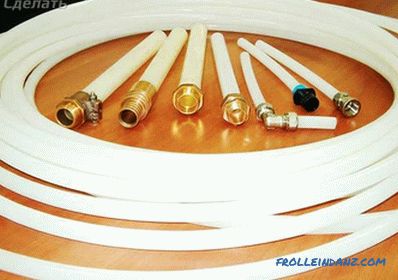 Installation of pipes from cross-linked polyethylene
Installation of pipes from cross-linked polyethylene
Products from so-called cross-linked polyethylene can be used in hot water pipelines or heating systems. It is a polymer of high density, subjected to electron irradiation. Under their influence, molecular chains create a single three-dimensional structure.
Unlike conventional polyethylene, this material is very resistant to extreme temperatures and pressure. In the absence of mechanical loads, it can operate in the range from -120 to + 120 ° C.
Pipes are mounted in two ways:
- compression fittings;
- using press fittings for plastic pipes.
In the first case, no special tools are required when assembling with your own hands. Only plastic secateurs and two wrenches are needed.
Procedure:
- At one end of the pipe, insert a compression nut with thread to the free end.
- Then they put the split ring and pipe on all the way onto the fitting fitting.
- Crimp nut tightened with a wrench.
Press fittings or press fittings are classified as one-piece and need a press tool.
When assembling:
- A clamping sleeve is put on the pipe.
- Insert into the pipe until the end of the dilator of the appropriate diameter.
- Smoothly reduce the extender knobs and fix for a couple of seconds.
- The fitting is pushed all the way down.
- The sleeve is pressed in with a manual or hydraulic press.
You often install polyethylene pipes and know all the details of their connection. Share your knowledge with our readers, leaving comments on the article.
Video
We offer to watch a video on welding of polyethylene pipes in a joint.
